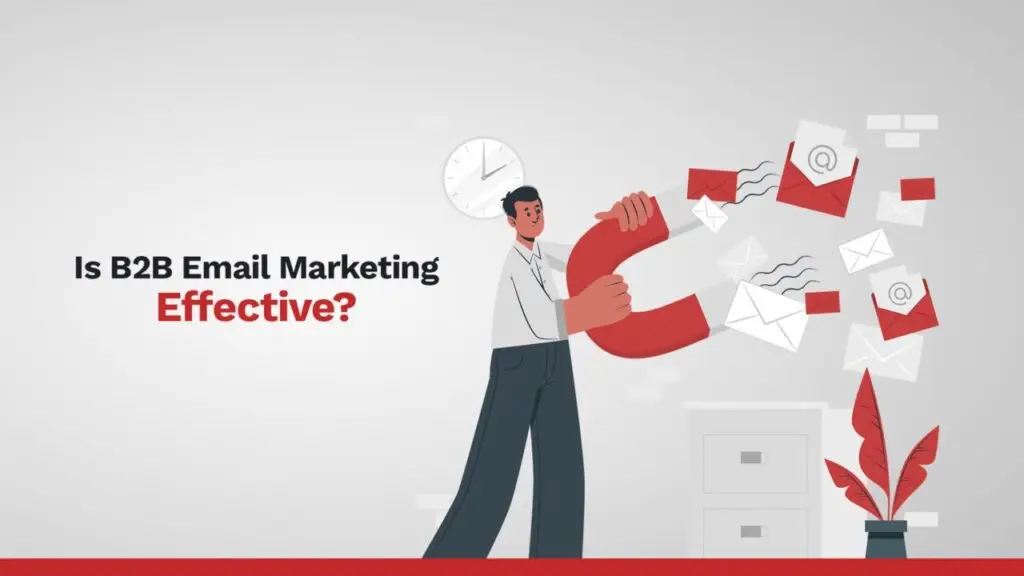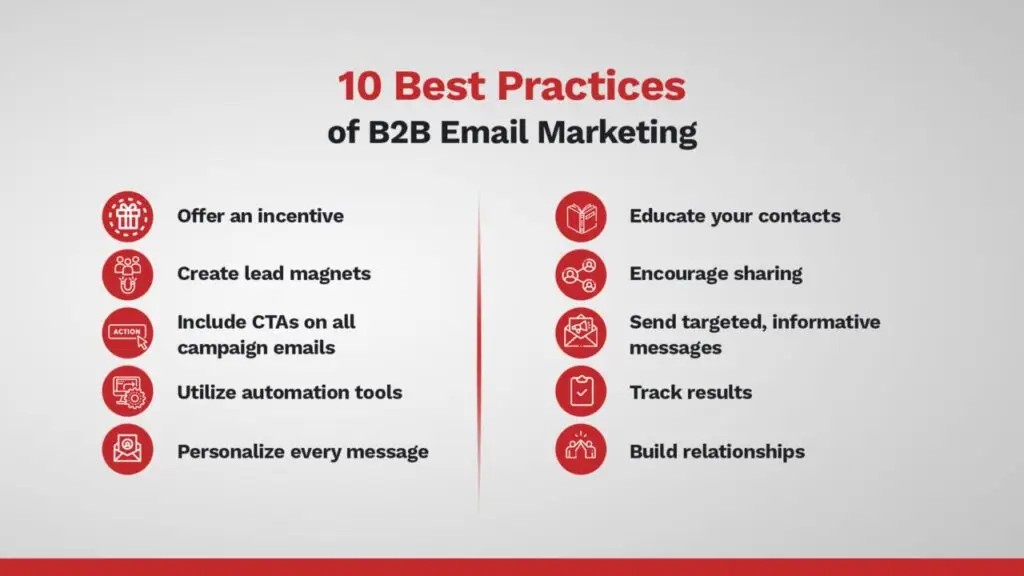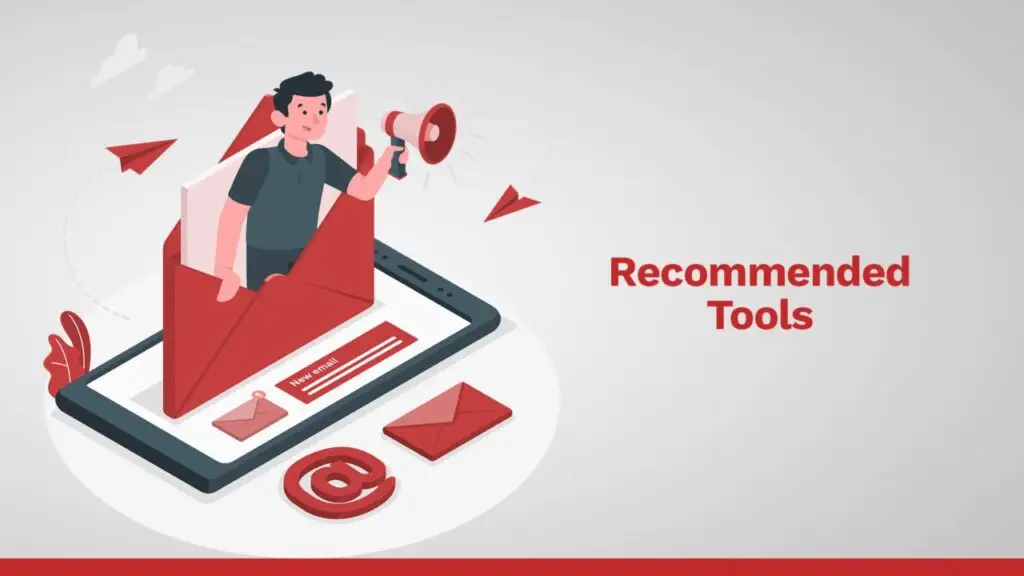The effectiveness of email marketing can’t be denied. For B2B companies, B2B email marketing has been proven time and time again to bring higher conversion rates than almost any other channel, including social media and display advertising.
This makes it the perfect tool for B2B businesses looking to sell more products and services, attract new leads, or just keep their existing customers engaged with the brand.
But just because email marketing works doesn’t mean you can treat it like any other channel—you need to follow some best practices if you want your emails to do all the work for you!
Online marketing is a great way to reach out to potential new customers. With the rise of email marketing, it’s become an essential part of any business’s online strategy.
Email marketing is one of the most effective methods for generating leads and converting them into paying customers. There are some best practices that can help you get the most from your campaigns.
Is B2B Email Marketing Effective?

B2B email marketing can be an effective tool in your online marketing arsenal. But, like most other aspects of business, you need to know how to use it effectively.
In order to get the most out of your B2B email marketing campaign, here are some best practices that you should take into consideration:
- Remember that not everyone is on a desktop computer at all times. While many people are using their smartphones or tablets for work and browsing the web, keep in mind that not everyone will be reading your emails from a desktop. Send updates through text messages or social media sites if you want to reach out to more people and cover more platforms.
- Be personal and friendly with your writing style. When sending emails, don’t sound too formal or robotic. Write them in a conversational tone, and make sure that you’re addressing the reader by name.
- Include links to helpful content such as blog posts and articles. Linking to these articles may help drive traffic back to your website, where they can sign up for one of your products or services.
- Keep your content relevant and fresh. Don’t send boring sign-up newsletters every single week without including any new information about what’s going on with the company– chances are that subscribers won’t bother opening future newsletters when there’s nothing new about them each time they come around.
- Don’t waste space in your newsletter! Your readers are busy, and likely have already seen everything you’ve included. Make sure to limit the number of articles that you post in your newsletter so that readers feel rewarded for opening each new message.
- Know who your target market is before reaching out with email campaigns. There are different types of opt-ins based on industry and job title, meaning certain groups might react better to certain types of campaigns than others– keep this in mind when creating advertisements.
When deciding whether or not b2b email marketing is effective, it really depends on how much effort you put into making it successful. Sure, you could just fill your list with prospects until they unsubscribe or, worse yet, block your messages completely.
However, if you focus on implementing the aforementioned tips and best practices, then it becomes much easier to see just how valuable b2b email marketing can be.
10 Best Practices of B2B Email Marketing

One of the best ways to attract and engage with potential customers is by email marketing. Email marketing campaigns are a great way to communicate company updates, events, new features, and essential deadlines. Here are 10 b2b email marketing practices that work well:
1) Offer an incentive
Offering an incentive such as a discount or bonus benefits both the customer and the business. It builds customer loyalty and helps get customers to buy more products than they would have otherwise.
2) Create lead magnets
Lead magnets are something that offers value upfront. These can be things like cheat sheets, templates, or access to a webinar series. This will encourage people to sign up for your list without requiring them to give you their contact information first.
A good lead magnet should offer substantial value but not take too much time to complete. For example, one b2b practice might offer access to a free guide on avoiding common mistakes in content creation.
3) Include CTAs in all campaign emails
The CTA (call-to-action) is what tells recipients what they should do next. Including all campaign and emails encourage engagement and allow you control over when contacts convert into leads or customers.
For example, you may want a contact who has been following your blog posts for several weeks to become a follower of your social media account instead of just an email subscriber. You could use this opportunity to provide a link to your website where they can subscribe. When it comes to CTAs, make sure there is one at the end of each campaign email to know which call-to-action resonates most with your audience.
You’ll also want to test different types of calls-to-action throughout the lifecycle of your email campaigns to see which gets higher conversion rates.
4) Utilize automation tools
Automation tools allow businesses to set specific times and days for sending messages out through automated triggers such as RSS feeds or Gmail/G Suite integration.
An automated process saves time creating content and ensuring it’s sent out consistently across multiple channels, eliminating repetitive tasks for marketers that could be better utilized elsewhere in the organization.
However, some best practices must still be followed. Constant monitoring of KPIs will ensure successful automation efforts and help identify any areas that need improvement.
5) Personalize every message
Using tags in subject lines and using segmenting in lists means prospects receive personalized messages based on interests they’ve shown or actions they’ve taken.
6) Educate your contacts
Emails containing relevant information about topics prospects are interested in are always welcome! Using this knowledge to craft engaging newsletters is another b2b email marketing practice worth noting.
Sending a newsletter with information related to a customer’s industry can be extremely valuable in helping nurture the relationship. Newsletter campaigns are usually best for collecting and nurturing leads instead of generating immediate sales.
7) Encourage sharing
Customers are more likely to share content that relates directly to their own industry or niche, so companies should include share buttons on landing pages and campaign emails.
8) Send targeted, informative messages
Sending targeted, informative messages is one of the best practices of b2b email marketing campaigns. Focusing on customers’ topics will keep them engaged with your brand and increase open rates.
9) Track results
Offering an incentive such as a discount or bonus benefits both the customer and the business. It builds customer loyalty and helps get customers to buy more products than they would have otherwise.
10) Build relationships
Building relationships with contacts is one of the best b2b email marketing practices. Nurturing leads with personalized content is important to building a trusting relationship with potential customers. This can be accomplished by including CTAs on all campaign emails that will help them take the next step in their customer journey. Doing this will create a stronger and more meaningful bond with the contact.
Additionally, CTAs should be included at the end of all campaign emails. This will help the business track which ones are resonating best with their customers and find ways to improve on them in future campaigns.
Recommended Tools

There are many tools for managing your email marketing. One of the most popular is MailChimp, which offers both a free and paid option. MailChimp is best for those with less than 2,000 subscribers because it doesn’t offer advanced segmentation or customer targeting features.
They also have a free version that includes all the basics like design, automation, and deliverability, as well as some advanced features for $0-500/month, depending on how many subscribers you have. The only downside to this service is that you can only add 500 emails to a campaign before being charged for them.
A few other options include SendGrid and Active Campaigns. SendGrid has lower costs but more limited features. Active Campaigns has more robust features but higher costs (starting at $9 per month).
All three options can be accessed via the internet browser, making them perfect for any business, regardless of location or size.
With these easy-to-use tools, no matter what kind of business you’re in, there’s a way to reach out and stay connected with customers.
For example, if you’re an eCommerce company looking for new leads, automating welcome messages and using tools like Omnisend can help grow your mailing list quickly by incentivizing signups with discounts and coupons.
On the other hand, if you’re running an eCommerce website with a large customer base that constantly needs updated information about their account status or order tracking, then something like Drip may work better for you.
Drip’s goal is to turn customers into brand advocates by providing them with helpful content based on their interests.
Regardless of your business type, one thing remains true: email marketing will help increase visibility among potential customers, so get started today!
Conclusion
In order to achieve great results with email marketing, you need to plan ahead and figure out your goals. It’s also important to create a reliable email list that consists of current and potential customers.
You can get this by offering incentives or collecting emails at the point of sale. Once you have a list, you can start sending out newsletters with valuable information about your products or services.
Remember that customers receive a lot of spam emails, so it’s critical that yours is personalized and stands out from the crowd.
Include compelling images and videos in your newsletter, include social media links and make sure the links in your newsletter lead to pages on your website instead of other websites.
The average person will read 40% of an email when it pops up in their inbox before deciding if it deserves attention later, so make sure the subject line contains keywords that resonate with them.
As soon as someone opens an email, offer them solutions immediately, such as discounts and special offers, before closing the window.
Keep it simple; don’t try to cram too much into one email. Put together a group of people who work well together and delegate tasks. Keep up with trends in mobile devices and stay on top of any changes that could affect your B2B email marketing strategy going forward.
